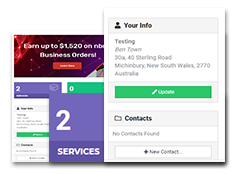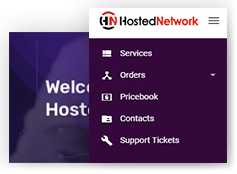New financial year, new opportunities!
What better way to kick things off than by giving your MSP’s profitability a boost?
Trends may come and go, but improving your MSP is a timeless pursuit. The business landscape has changed a lot, and what worked before might not cut it anymore.
We’ve gathered real-life insights and advice from your peers on how to boost your MSP’s profitability and also ensure it runs like a well-oiled machine from top to bottom:
1. Handling misbillings
We’ve all heard the saying, “We win some, we lose some.” But this mentality doesn’t fly when it comes to billing.
Even the smallest oversight can result in sunk costs that eat into your profits.
It’s crucial to check the details and address any discrepancies that might be impacting your profitability. Start by thoroughly examining your professional services automation (PSA) tool. Take the time to identify your biggest vendor and closely scrutinise how they sell their services versus how you’re purchasing them. Look for any inconsistencies or gaps in pricing, contracts, or service agreements.
Alternatively, you can leverage tools like CloudOlive to help streamline and automate the reconciliation of vendor invoices with client billings (which conveniently consolidates them in a single platform; super cool).
Additionally, it’s essential to have open communication with your administrative team. Engage in conversations to understand why they might have reservations or frustrations with a particular vendor. Their insights can provide valuable information about potential issues in the vendor’s offerings, pricing structure, or overall customer experience.
By proactively tackling misbillings head-on and optimise your expenses. Every dollar counts, and addressing these discrepancies can make a significant impact on your bottom line.
2. Liberating your MSP from owner dependency
As an owner, you have to liberate yourself from the never-ending cycle of being the go-to person for every aspect of your business. If you keep finding yourself doing what you are not supposed to do like managing licenses or personally handling client interactions, it’s time to take a step back and reevaluate your level of involvement.
Consider the amount of time you spend working for the business versus working on the business. Are you spending too much time in the trenches, leaving little room for strategic planning and growth? Shift your focus and create a team that can thrive independently, even in your absence.
Delegate tasks! Enable your team by assigning them responsibilities and granting them the authority to make decisions. Encourage them to take ownership of their work and provide them with the necessary tools and resources to excel.
Building a culture of autonomy and accountability is equally important. Foster an environment where team members are encouraged to take initiative, explore creative solutions, and collaborate effectively. By empowering your team and fostering their autonomy, you’ll create a workforce that can adapt and thrive in the face of challenges.
3. Team management
First things first, identify the hat that you’re desperate to take off. Is there a particular role that’s been nagging at you, consuming your time and energy? Pinpoint that one role that you’re itching to get rid of, and make it your top priority.
Once you’ve identified the role, it’s time to define clear expectations for each team member. Streamline your processes, document workflows, and ensure that everyone knows what they’re responsible for.
Utilise tools that can automate repetitive tasks, freeing up valuable time for your team to focus on high-value activities.
Remember, effective delegation is not just about lightening your load; it’s about allowing your team to grow and excel. Provide them with the resources, training, and support they need to thrive in their roles.
In some cases, you may find it beneficial to seek assistance from external consultants who specialise in optimising team dynamics and workflow efficiency.
Additionally, if you have a task or project that doesn’t require a full-time employee, you can leverage cost-effective outsourced help through platforms like Upwork. Upwork connects businesses with a vast network of freelancers who offer a wide range of skills and expertise. Utilising such platforms can enable you to find qualified professionals on a project basis, providing flexibility and cost-efficiency.
Also you have to remember that effective team management involves more than just assigning the right people to the right seats. It covers different aspects that contribute to a thriving team and a positive work culture including:
- Open and transparent communication
- Recognising and rewarding great performance
- Investing in the growth and training of your team
- Prioritising mental health and wellness
- Involving team members in decision making
By considering these factors, you’re creating an environment that values communication, growth, and well-being and cultivating a high-performing team that is motivated and engaged in achieving shared goals.
Suggested read: 5 ways to boost MSP team morale and retain talent
4. Standardising systems and processes
Identify the areas where your business is bleeding the most – whether it’s time, resources, or profitability. Identify the pain points that hinder efficiency and growth – these pain points are the perfect candidates for standardisation.
By establishing clear guidelines, documented procedures, and standardised workflows, you create a foundation for consistency, clarity, and repeatability.
With repeatable and standardised processes in place, everyone on your team knows exactly what is expected of them. No confusion or miscommunication. Consistency becomes the norm as everyone follows the same set of procedures.
And remember, streamlining your MSP is an ongoing journey. As you identify areas for improvement, embrace change, and adapt your processes accordingly. Continuously seek feedback from your team, monitor industry trends, and remain open to new ideas and technologies that can further optimise your operations.
“You won’t know how to find the right processes until you find the right seam, until you’re growing”
– Adam Ross, Founder and Co-CEO at CloudOlive
5. Time Tracking
“Move from being the time teller to the clock builder. Build the clock – the clock will tell time without you.”
– Zaun Bhana, Managing Director at Leap Consulting
Have you ever found yourself staring at those time charts and wondering where all those =hours disappeared to? Time tracking is the key to effectively managing your MSP and ensuring optimal productivity. While your professional services automation (PSA) tool may be helpful, it’s important to recognise that it’s not the be-all and end-all solution.
It’s time to take a closer look at how you allocate your time across various activities within your MSP. Start by examining the time spent on pre-sales efforts, the level of your involvement as owners (If you are one), and the rates you charge for your valuable services. It’s time to dig deep into the data and analyse it to uncover the areas where time seems to slip away without bringing in the desired returns.
“At the end of the day, in a professional services organisation, time is our product.” – Ryan Spillane, 360 Consulting
Accurate time tracking practices go beyond simply logging hours. They provide valuable insights into how time is allocated, where it is most effectively utilised, and where it might be leaking away without generating the desired outcomes. By delving into the details of time tracking, you can identify inefficiencies, bottlenecks, or areas where resources are being over or underallocated.
Interested in learning more from your peers? Watch the on demand episodes of our top-rated webinar series, MSPs in Conversation! These discussions are packed with golden nuggets from your industry experts on all things MSP success – from sales, marketing, profitability, team management, cybersecurity, customer experience, mergers and acquisitions operations and more!
 Contact us
Contact us  Partner Login
Partner Login  Service Status
Service Status 


 July 07, 2023
July 07, 2023
 Madeleane Abejero
Madeleane Abejero
 3 mins
3 mins